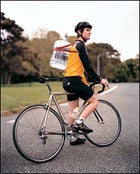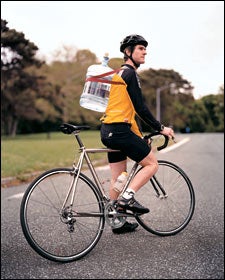After years of faithfully guarding against the much-hyped perils of dehydration, recreational athletes were hit with some startling news this past spring: Drinking water can kill you. A recent study in The New England Journal of Medicine had news outlets issuing grim proclamations about the dangers of hyponatremia—a potentially deadly lowering of blood-sodium levels—and telling everyone to put the bottle down.
hydrating
 Don’t sweat it: Staying properly hydrated is easier than you think.
Don’t sweat it: Staying properly hydrated is easier than you think.Not so fast. While the risks of hyponatremia are very real, dehydration is still far more common, and overcorrecting for one condition can leave you vulnerable to the other. The key is knowing what to drink and when.
Hyponatremia is associated with slower finishers in endurance events, who, because of the length of time they are on the course, often end up drinking far more than they need, thus diluting their sodium levels. Symptoms include postworkout weight gain, throbbing headaches, and bloating, and the condition can lead to fatal brain swelling. The best defense—against both hyponatremia and dehydration—is to match fluid and sodium intake to sweat loss, which you can figure out on your own. Here’s how.
»SWEAT RATES can vary widely between individuals. To determine yours, weigh yourself in the buff before and after one hour of training, while tracking your fluid intake. A liter (34 ounces) weighs about two pounds. So if you drink one liter during a one-hour run and have a net loss of one pound of body weight, your sweat rate was 1.5 liters per hour. Try tailoring your intake during workouts to prevent fluctuations in weight.
»SALT CONTENT is your next concern. If you have a high sweat rate (more than two liters per hour) and you also notice salt markings on your workout clothes, consider yourself a “salty sweater.” If this sounds like you, be especially diligent about using sports drinks that contain sodium—don’t make the common mistake of overdrinking sodium-free fluid before and during exercise.


